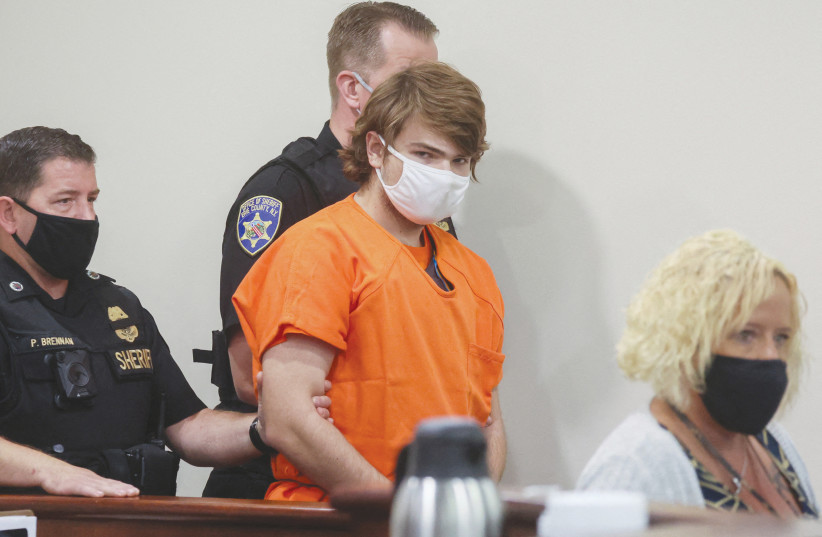The United States is in the midst of a wave of terrorism.
There is no other way to describe the random murder of 19 elementary school children and two of their teachers in a Uvalde, Texas, school on Tuesday, just five days after 10 people were murdered in a Buffalo supermarket.
In between those two incidents was the murder of one person in a California church, an attack that would have been much worse were it not for those on the scene who physically restrained the shooter. In addition, 24 others were killed and 54 injured in shooting incidents in the US in the 10 days separating the Buffalo and Uvalde incidents.
That constitutes a wave of terrorism, and it is incumbent upon the US to recognize it and act accordingly.
Had al-Qaeda or ISIS gunned down 55 people across the US within 10 days, America would have pulled no punches in hunting down the terrorists and deterring others.

Not so when it comes to killings by home-grown murderers armed with firearms purchased legally. When this happens, the US lowers its flags to half-mast, has moments of silence before the start of sporting events, talks about the need to do something, and then does little.
Mass murder in the US is a scourge that will repeat itself with ever-increasing frequency as long as the country’s reply remains much talk, little action.
Perhaps the reason for this is because there are an estimated 300 million firearms in the hands of US citizens; perhaps because of the powerful National Rifle Association lobby; perhaps because of a deep attachment to Second Amendment rights allowing citizens to bear arms. Regardless, whenever the US is hit by mass killings, there is a tendency for the country to demonstrate tremendous amounts of sympathy and empathy, but then collectively throw up its arms and say, “This problem is just too big, there is little we can do.”
But that is the wrong attitude. Instead, we recommend that the US adopt a similar approach to the way Israel deals with the unfortunate waves of terrorism that it regularly faces. Instead of just talking about how evil it is, Israel takes meaningful action. Even if it knows it cannot wipe it out completely, Israel realizes that by taking concerted steps, it is possible to reduce the numbers.
Murder by firearm is not an act of God. It is not an earthquake or a tornado. It is something that – if it cannot be completely eradicated – can, through regulation, be greatly reduced.
Murder by firearm is not an act of God. It is not an earthquake or a tornado. It is something that – if it cannot be completely eradicated – can, through regulation, be greatly reduced. Nobody thought over the last century that fatal traffic accidents were a natural curse that could not be dealt with. Rather, through regulations on both drivers and vehicles, the rate of fatal accidents in the US fell from 18.65 deaths per 100 million miles driven in 1923, to 1.46 deaths in 2020 for the same measure.
The same approach must be adopted when facing murder by legally purchased firearms: Regulation must be far stricter regarding who can buy a gun and what types of weapons can be bought.
For instance, research has shown that states with tougher gun licensing requirements have fewer gun-related homicides than states where those requirements were loosened. Also, much more scrutiny needs to be paid to who is purchasing weapons. This means not only more rigorous background checks – it’s easier to get a gun in parts of the US than to adopt a pet – but also limiting who can buy them.
Mass shooters in the US come in all shapes, colors, ideologies and ages. Yet one common denominator linking the Buffalo and Uvalde killers was their age. Both were 18. Some states have banned the sale of weapons to those under 21, but just two weeks ago a US Appeals Court ruled that a California ban on selling semi-automatic weapons to those under 21 was unconstitutional. That seems mad.
Banning weapons sales to those under 21 is not going to stamp out mass murder across America. But it is one small step that may make a dent. Since the beginning of 2022 in the US, there have been 212 mass shootings, defined as incidents where four or more people are shot or killed. That is an astounding number.
The US needs to start tackling this one small step at a time.
